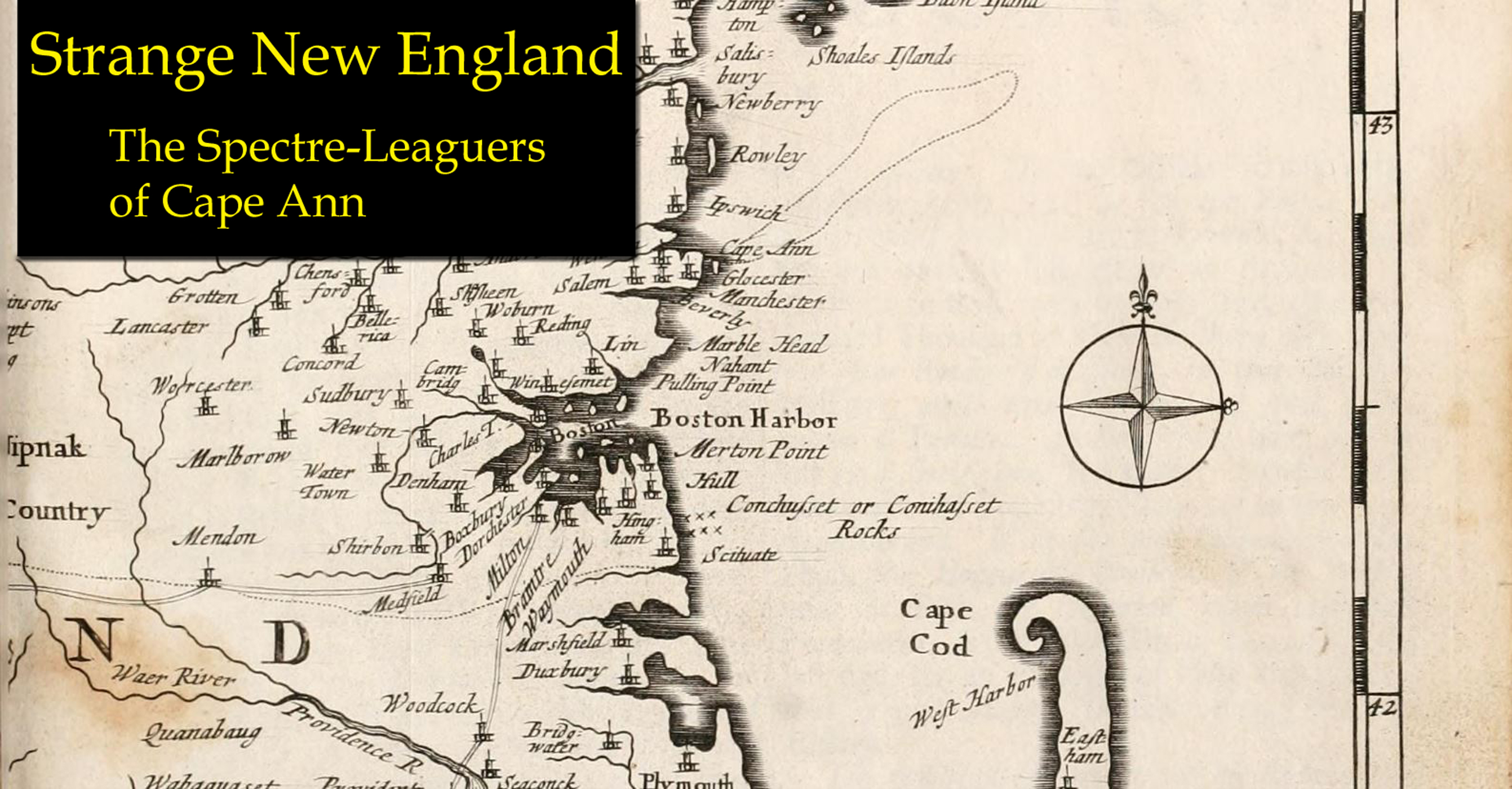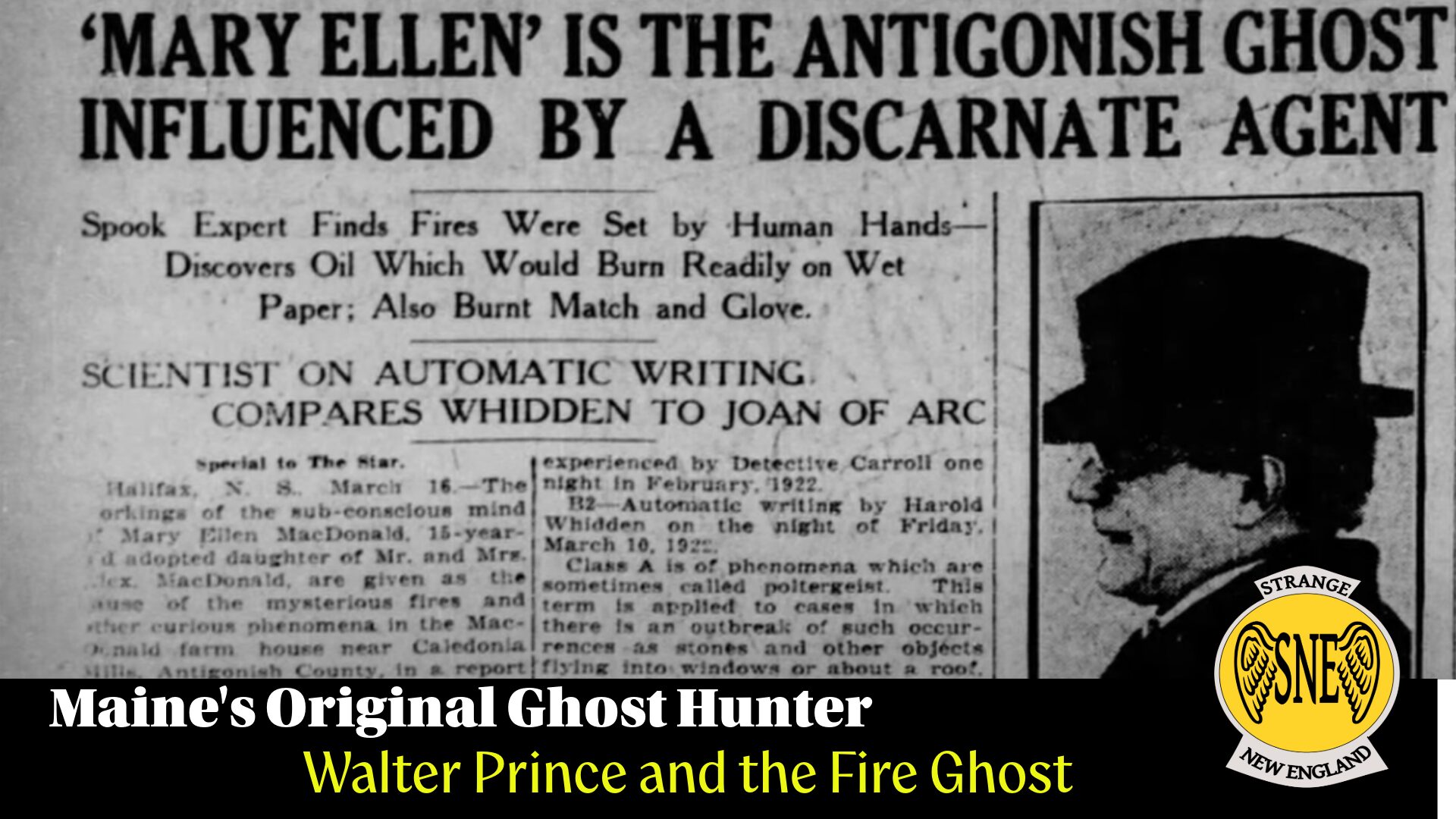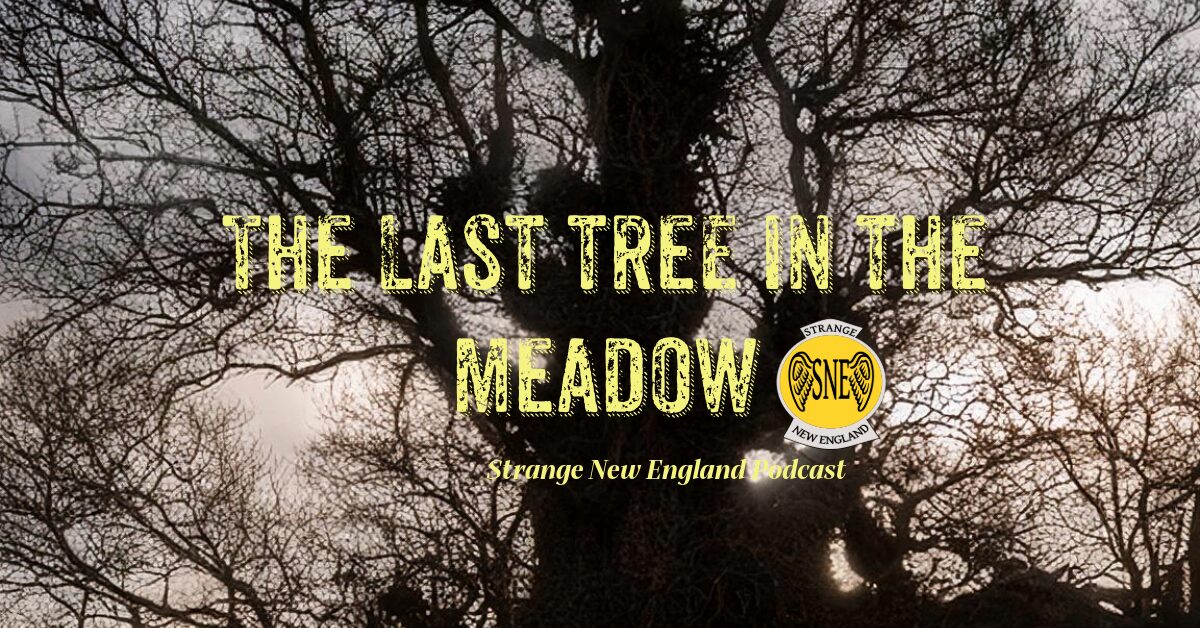
The great 19th century American poet, John Greenleaf Whittier, composed a strange poem entitled “The Garrison of Cape Ann” that tells one of the strangest tales ever to come from colonial New England. The event he recounts for us is supposed to relate actual events that occurred during the same year that the Salem Witch Trials occurred – 1692. Whittier’s poem isn’t very long and relates the tale of a garrison of soldiers inside the Fort at Cape Ann, Massachusetts. What is so bizarre about this episode is the nature of the beings assailing them from outside the walls of the fort. Contemporary witnesses had difficulty describing these beings, unsure if they were men or something else. Whatever they might have been, a group of strange beings are attacking the walls of the fort, beings that seem foreign and evil. They wear strange garb, never-before-encountered suits made of a material that shines. They have a language that no one in the Fort can understand or even identify. They seem to possess weaponry like nothing the colonists have ever seen before. Even though the garrison’s soldiers shoot their muskets at these strangers and undoubtedly hit them, no damage is ever done. The strange beings fall down in mock wounding and rise again, laughing. No one is ever killed. The beings continue to cavort and mock the soldiers. It appears that there is nothing that can stop them. Then, the Captain of the Garrison puts down his gun and tell the soldiers that there is but one way to beat the creatures. First, he rips a silver button from his jacket and rams it down the barrel of his musket. Then, he takes aim for the creature he deems to be their leader and shoots, hitting him in the chest. The being instantly disappears. Surely this is evidence of the doings of the Devil. Then the Captain calls upon his faith. He falls to his knees and begins to pray and he instructs his men to do the same. They comply. Soon a foul scream is heard outside the walls and the strange beings simply begin to disappear. Prayer, it seems, is a better defense than musket balls.
Whittier must have heard of this well-known legend as a youth, but it is available for everyone to read as chronicled by a contemporary of the Cape Ann witnesses, Cotton Mather, in his book, Magnalia Christi Americana. Mather claims to have interviewed the main character in the actual story, making it as close to a primary source as we are likely to find. The events began with the experiences of one man and his family. Ebenezer Babson, yeoman farmer from Cape Ann (also called Gloucester in the Mather text), one summer evening in 1692, heard noises outside his home. The darkness was deep in early New England, especially in the country and one did not lightly step outside to investigate without looking out the window first. When he did, there was nothing he could discern. While his family remained safely inside, Babson ventured outside to see what was causing the strange sounds that so vexed his family. The noises indicated a large number of people were in his yard, running back and forth. When he investigated, there was no evidence that anyone had ever been there. The sound stopped…for that night. However, the sounds returned for many consecutive nights, frightening the family.
A few weeks later, Babson was returning home alone. It was one of those midsummer evenings where the sun seems to linger on the edge of the horizon, painting the sky a dazzling shade of orange. The air was cooling quickly and soon, night would fall. From a distance, he saw two strangers leave his house from the front door. He was about to shout at them to stop when they noticed him and took off at a clip down the road, away from the Babson farm. Babson ran home and immediately questioned his family who were all safely inside the house. Who were these strangers and what did they want, he asked. His family was confused. There had been no strangers, they claimed. No one had visited them that day. He must be mistaken. With no further hesitation, Babson armed himself with his musket and began searching for these erstwhile intruders. Though he could find no discernible tracks, his good sense told him that these men must have taken the route straight through the corn field. He followed, slowly and deliberately. At the edge of the field with night finally falling , he heard a strange, hollow voice speaking in a monotone, saying, “The man of the house is now come else we might have taken the house.” These mark the only words spoken by the strangers in English.
That is when Babson saw the strangers up close for the first time, but only for a moment in the falling dark. When they saw him, they ran away instantly into the swamp, an area he would not enter, leaving him wondering who, or for that matter, what they were. They did not look like or dress like the natives he knew and they did not look like Englishmen. It is at this point in the narrative where the strange nature of the beings begins to be apparent – they were unlike any men he had ever seen. Yet, if they weren’t natives and they weren’t Englishmen, what were they? Whatever they were, he did not want his family to have to face them alone, particularly after what they had just spoken a moment ago. Running back to his farm, Babson had his family gather some things. They repaired to the local fort where they could safely spend the night without regard for marauding strangers.
However, the moment they entered the well-manned fort, everyone inside heard a ruckus beginning outside the walls. The noise was similar to what the Babsons had been hearing at their home, but this time it was louder and more raucous. Babson was by now so frustrated and angry at the series of events that he opened the fort’s gate and ventured out to see exactly who they were. All he saw were two men running swiftly away down the dirt track away from the garrison.
In early America, there were threats abounding from all sides. Babson and the men at the fort had not clearly seen the two men, but they must have assumed that they were scouts for a much larger force not very far away. Natives may have been their first suspects, but Babson’s one close peek at them convinced him they weren’t the culprits. Perhaps they were Frenchmen. That made more sense as these two men were strangely attired in clothing that the simple New Englanders had never seen before in their lives. Surely only Frenchmen would dress in such a fashion. Perhaps these were truly criminal types, not unknown in the colonies. Pirates might even be an explanation. The fort prepared for an attack which must surely come before dawn. Except it never did. The Babson family was so shaken up by the hole affair that they remained in the fort.
Two nights later the two oddly-dressed strangers returned to the fort and they were armed. Again, Babson walked out of the fort to face them when he saw them move with a super-human rapidity. The men on the fort’s ramparts aimed their muskets at the men but, strangely, they took no shots. Their reason was that the men were moving so quickly from place to place that they could not get a bead on either of them. The strangers didn’t run away so much as run about . The good folk of Cape Ann were awestruck and dumbfounded at the idea of these strange visitors bothering their peace. Who were they? What did they want? Where did they come from?
The next time we hear of these strange intruders is on July 14, 1692. All of the men in the garrison witnessed a group of six of these strangers approaching the settlement. Expecting to be attacked, the men of Cape Ann waited patiently for the right moment to attack. They waited until they were within range of their guns. When the moment arrived, the villagers moved and frightened the six strangers with their action. The strangers scattered. Babson, whose story this is, found one of them in his sights. He fired, but the weapon strangely failed to discharge. The weird visitors moved rapidly to avoid the villagers, but at one point three of the strangers arose from the swamp walking strangely, shoulder to shoulder in perfect cadence. Babson reports that he fired again – only a single shot, at which point all three of the strangers fell to the ground. However, the excitement of the villagers was short-lived. As soon as they reached the fallen, they simply arose and jumped about, moving merrily about them “apparently without hurt or wound of any kind. Then, for the first time, one of the strangers withdrew from their strange clothing what Babson reported as a ‘silver gun’ and shot at Babson. The weapon discharged a shot that lodged in the tree that Babson was hiding behind. Later, Babson would remove the shot from the wood only to discover that it was long and pointed, unlike the round lead balls that were the shot of the day among the world’s armies. His description sounds like he found a modern bullet. These types of pointed bullets did not come into use until 1823 when Captain John Norton introduced them for use in the British Army, yet Babson describes a pointed bullet lodged in the tree from the stranger’s silver gun.
There were other incidences of these strangely clad beings appearing and other reports of them being shot, falling down, and then getting up and cavorting without any obvious damage. It was as though they were play acting and this highly strange behavior left the colonists at their wits end. Everyone involved in the attack returned to the safety of the fort, unsure what to make of the day’s happenings. It didn’t take long for the strangers to return once again, this time at night and no longer simply walking but flitting from stone to tree, from wall to road and back again. Other forms were perceived as crouching behind rocks, staring at the colonists.
Still, the good people of Cape Ann had no idea who they were dealing with. They were perplexed and in their time, it was not a very far jump to assume that what they were dealing with might be of the Devil himself. After all, they spoke a strange tongue, moved about in an odd, inhuman way, and could not be harmed. If your gun could fire off a shot, it never did any damage, even when it hit them square on. The colonists sent word to Ipswitch, to a certain Captain Appleton for help. He dutifully arrived with his sixty heavily armed men to hold the town from any and all invaders and attackers. The people of the town could sleep more easily now that the professionals had arrived.
Except the military men had no better luck than the men of the town. Over and over again they fired their muskets at the strange revelers to no avail. Nights were worse than days for it was then that the strangers grew more and more restless, throwing stones at the garrison (lithobolia), hitting the wall with clubs, and shouting in a strange, unintelligible language. No progress was made and it seemed there was no end in sight. One line of Whittier’s poem reads,
” Lay aside your useless weapons; skill and prowess naught avail; They who do the Devil’s service wear their master’s coat of mail.”
But it did all come to an end after one final encounter with, of course, Babson. In a sojourn that took him out of the confines of the town one day, Babson discovered three of the beings walking down the middle of the road. He took up his musket to fire at them, but it again misfired. The three strangers simply walked past him, barely acknowledging his presence.
After nearly three weeks of being terrorized by these odd creatures, it stopped as suddenly as it began. No one died. No permanent damage was done to anyone involved. What caused it to stop may have been the simple fact that the colonists stopped attacking the strangers. Without the colonists attentions, the strangers simply stopped and then disappeared. No one knows who or what they were or why they seemingly delighted in taunting, teasing and frightening the residents of this early American settlement half to death.
There are many strange theories about the nature of these beings. Of course, at the time the conclusion was easy to draw that they were demons sent from the infernal regions who from time to time intruded among the righteous to test their faith. In later years, other theories such as ghosts, extraterrestrials, and even inter-dimensional beings were proposed. Perhaps the simplest explanation is one that the colonists themselves first came up with when Babson first encountered the ‘spectre leaguers’ – perhaps they were only Frenchmen, after all? What was stranger to an Englishman than a Frenchman?
But even Frenchmen cannot sustain a chest shot from a musket at close range. The ability for the stranger to receive a lead ball square in the chest and then rise again with no apparent injury puts them in a league of their own. In fact, the name that legend gives these beings is ‘Spectre-Leaguers’. Perhaps they were time-travelers with some kind of force field that protected them from the lead balls of the colonists? The strangeness of this episode in early American history is unique – no other report like it has ever been found. It is plausible that Cotton Mather , no stranger to the power of propaganda, used this tale as a kind of Christian pcautionary tale – ‘be warned against the strangers from afar…’ The idea of strange beings from the edge of the world come to raise havoc and disquiet the good people of the colony must have always been in the back of their minds. Perhaps this tale is nothing more than a story, but if it isn’t, it then becomes one of the earliest reports of high strangeness from New England.
SOURCES
Citro, Joseph A., Passing Strange: True Tales of New England Hauntings and Horrors, copyright 1996, Capters Publishing, Shelburne, VT.
Drake, Samuel Adams, New England Legends, copyright 1993, Castle Books
Magnalia Christi Americana : or, The ecclesiastical history of New-England, from its first planting in the year 1620. unto the year of Our Lord, 1698. In seven books …by Mather, Cotton, 1663-1728; John Adams Library (Boston Public Library) BRL;Adams, John, 1735-1826, former owner; Tufts, Cotton, 1732-1815, former owner Published MDCCII [1702]
Whitter, John Greenleaf, “New England: Cape Ann, Mass. The Garrison of Cape Ann” http://www.bartleby.com/270/13/82.html




